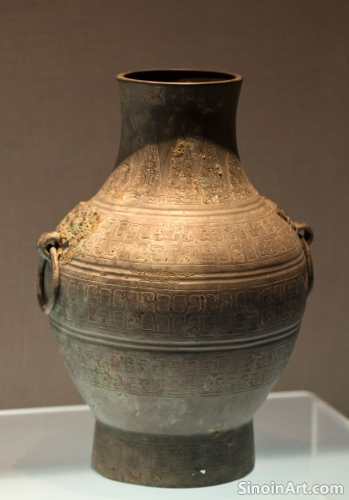Bronze Ware and Ancient Chinese Medicine: Tools and Beliefs About Health
|
While bronze is primarily known for its use in ritual objects, warfare, and the arts, it also played a role in ancient Chinese medicine, used to create tools, instruments, and implements, and helping to shape a new understanding of health and wellbeing. The use of these tools highlights the intersection of ancient medicine with ancient metallurgy.  Bronze was used to create specialized tools for surgical procedures, including needles, scalpels, and probes, reflecting the ancient Chinese understanding of human anatomy and their early attempts at surgical intervention. These instruments demonstrate both an understanding of medicine and also a mastery of the metalworking arts.  Bronze was also used to create instruments for diagnostic purposes, such as acupuncture needles and other specialized implements, which were all carefully crafted and designed for specific medical procedures. These instruments reflect a deep knowledge of both the human body and the use of metal for healing purposes.  Bronze vessels were sometimes used in the preparation of herbal remedies, highlighting the connection between bronze, herbalism, and the creation of medicinal preparations. The use of specific metals in the preparation of medicine was seen to enhance their efficacy. The study of bronze in the context of ancient Chinese medicine reveals a complex and intertwined relationship between technology, belief systems, and the pursuit of health and well-being. The combination of practical considerations and metaphysical beliefs was a common element in ancient Chinese medicine. |
Tag : bronze medicine, Chinese ancient tools, acupuncture, medical instruments, ancient health
Related information
- The Production and Use of Bronze in Ancient Chinese Musical Instruments: Harmony and the Cosmos
- Bronze Ware and Ancient Chinese Trade Networks: Evidence of Cultural and Economic Exchange
- The Use of Bronze in Ancient Chinese Textile Production: Tools and Decorative Elements
- Bronze Ware and Ancient Chinese Astronomy: Celestial Symbols and Interpretations
- The Role of Bronze in Ancient Chinese Funerary Practices: Preparing the Deceased for the Afterlife
This article explores the use of bronze in ancient Chinese musical instruments, highlighting the technical skill involved in their creation, the cosmological beliefs they represent, their role in ritual practices, and the interplay between music, spirituality, and the material world.
This article explores the role of bronze ware in ancient Chinese trade networks, highlighting the distribution of artifacts, the movement of raw materials, and the cultural and economic impact of these trading connections on the development of China.
This article explores the use of bronze in ancient Chinese textile production, highlighting its role in creating tools like hooks and needles, decorative elements like buckles, and revealing the interplay of metalworking and textile craftsmanship.
This article explores the connection between bronze ware and ancient Chinese astronomy, highlighting the use of celestial symbols, the representation of astronomical phenomena, and the use of bronze in astronomical instruments, showcasing the interplay between art and science.
This article explores the role of bronze in ancient Chinese funerary practices, highlighting the inclusion of ritual vessels, weapons, mirrors and other objects, and how these items reveal beliefs about the afterlife and the preparation of the deceased for their journey.